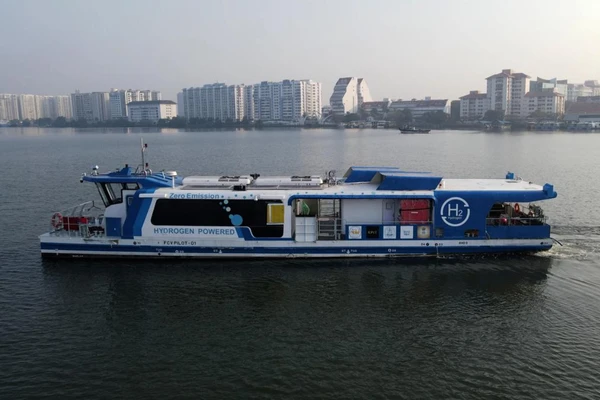Recently, Prime Minister Narendra Modi launched the country’s first indigenous green hydrogen fuel cell inland waterway vessel under the Harit Nauka initiative.
About Harit Nauka initiative:
- The Harit Nauka initiative is a program by the Ministry of Ports, Shipping, and Waterways (MoPSW) to transition inland vessels to green energy.
- According to guidelines released by shipping ministry, all states are required to transition to green fuels for 50% of inland waterways-based passenger fleets within the next decade and achieve 100% usage by 2045.
- The initiative’s goals include:
- Adopting green vessels
- Establishing a green ecosystem
- Using low- or zero-emission fuel sources
- Achieving 100% green vessels in Indian waters by 2047
- The initiative’s pilot project is a Hydrogenfuel cell-powered vessel that emits zero emissions and noise.
- Hydrogen fuel cell vessels do not use conventional batteries as the primary storage house of electrical energy.
- The vessel is energy efficient and can be used for urban mobility.
How do hydrogen fuel cells work?
- A hydrogen fuel cell generates electricity by harnessing the chemical energy stored in hydrogen, producing only pure water as a byproduct and emitting no pollutants.
- The process involves loading hydrogen into cells, where the energy within hydrogen is converted into electricity and heat, powering the vessel’s propulsion system.
- In the fuel cell, hydrogen reacts with oxygen from the air to generate electricity.
- Unlike batteries, hydrogen fuel cells operate continuously without the need for recharging, as long as there is a constant supply of fuel and oxygen.
Ref:Source
| UPSC IAS Preparation Resources | |
| Current Affairs Analysis | Topperspedia |
| GS Shots | Simply Explained |
| Daily Flash Cards | Daily Quiz |



